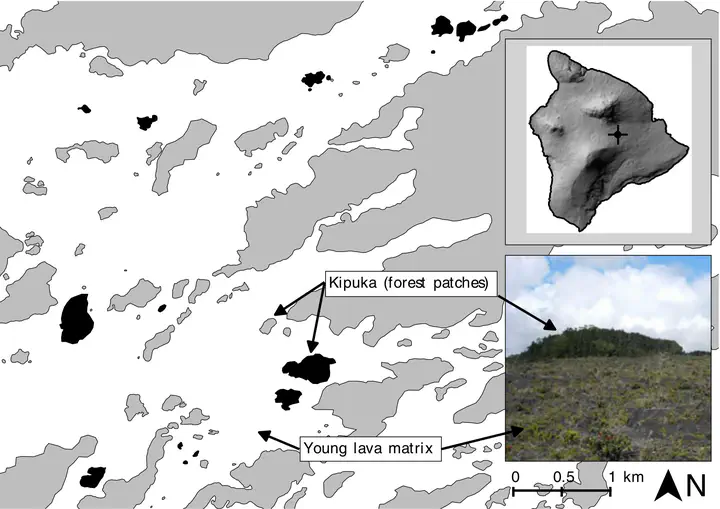Forest area and connectivity influence root-associated fungal communities in a fragmented landscape

Abstract
Habitat fragmentation is well known to affect plant and animal diversity as a result of reduced habitat area and connectivity, but its effects on microorganisms are poorly understood. Using high- Throughput sequencing of two regions of the rRNA gene, we studied the effects of forest area and connectivity on the diversity and composition of fungi associated with the roots of the dominant tree, Metrosideros polymorpha, in a lava-fragmented landscape on the Island of Hawaii. We found that local fungal diversity increased with forest area, whereas fungal species composition was correlated with fragment connectivity. Fragment size and connectivity were significant predictors even when we included environmental covariates, which were also associated with fungal diversity and composition. Fungal species composition was more similar among highly connected fragments than among poorly connected ones. We also identified individual taxa that varied in abundance with connectivity. Taken together, our results show that habitat fragmentation can alter microbial diversity and composition via differential response among fungal phyla and individual taxa to habitat connectivity.